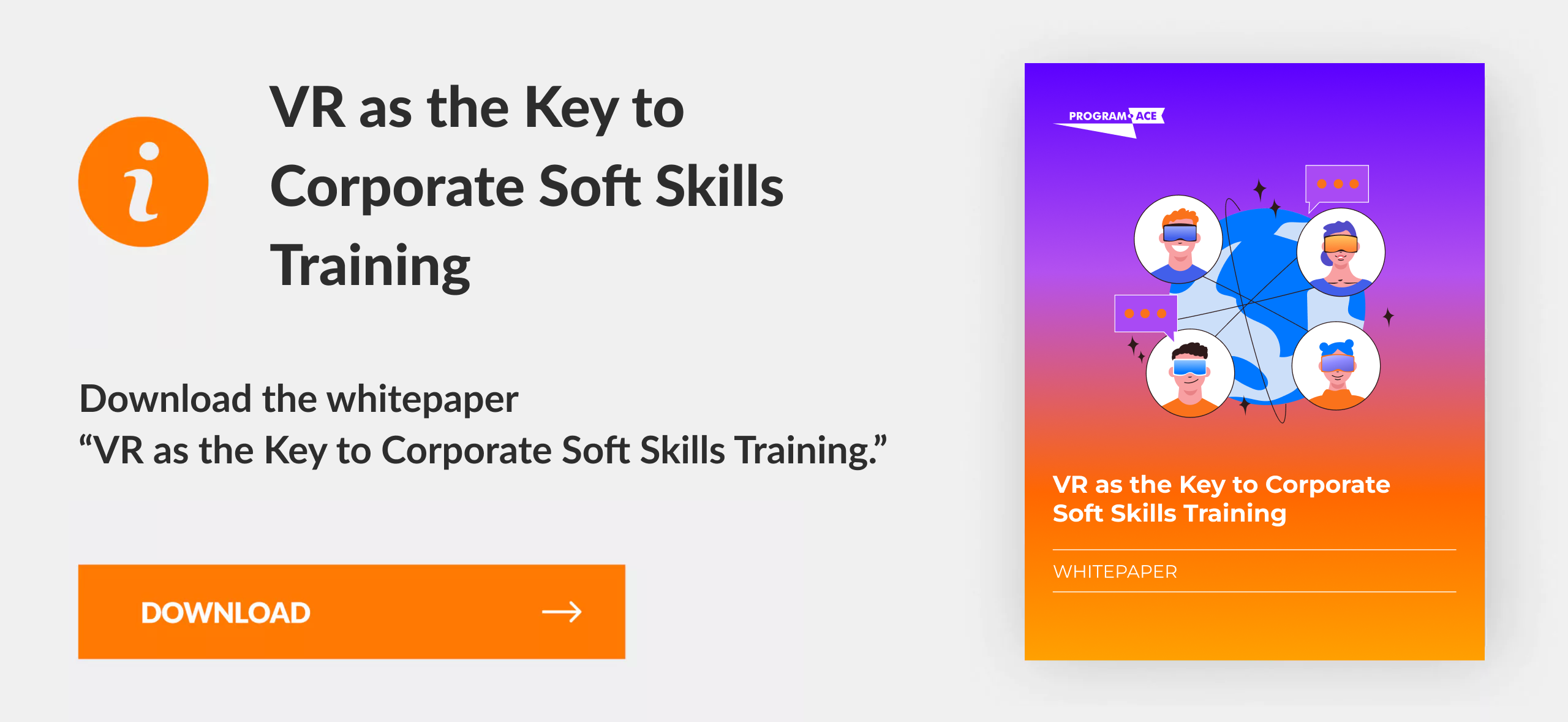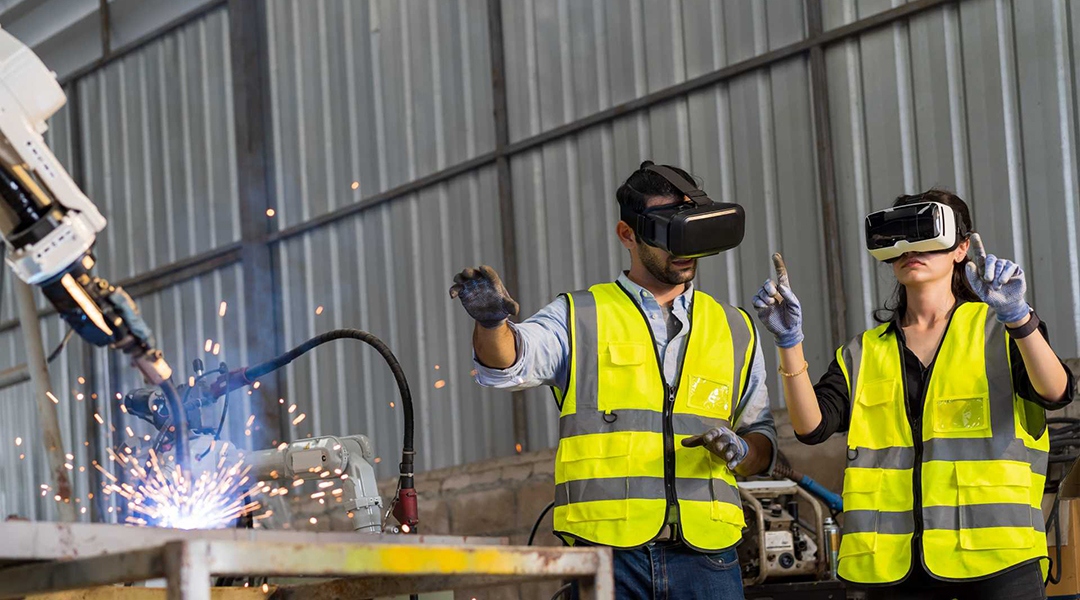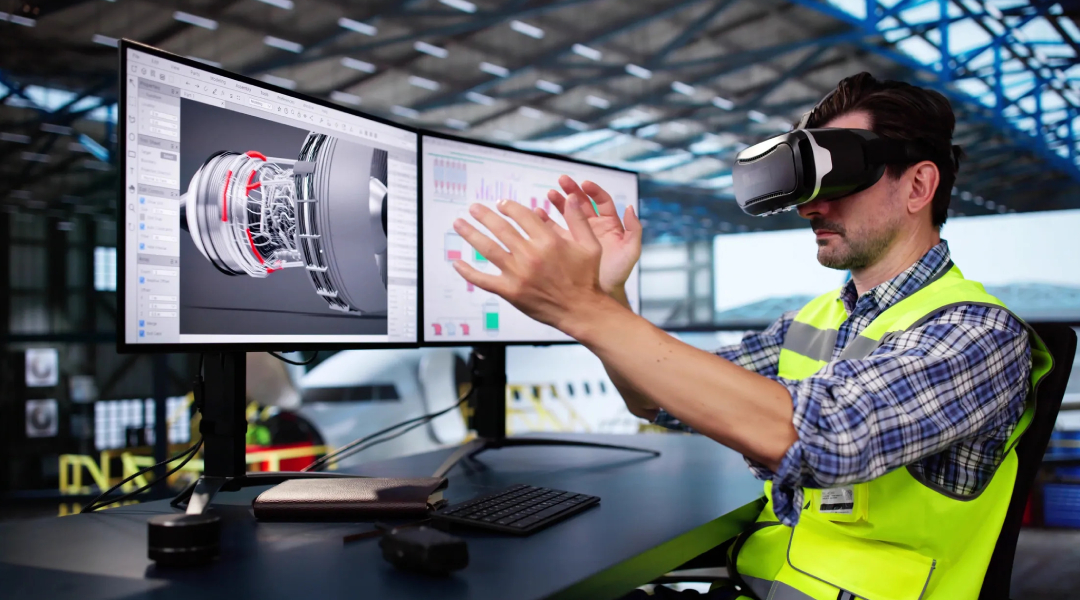Enhancing employee potential is possible through VR soft skills training. A virtual reality training company offers organizations the ability to provide immersive learning experiences, improving communication, leadership, and teamwork skills. Realistic scenarios within VR allow employees to practice essential soft skills in a safe, controlled environment. This method makes preparing for real-world challenges more effective, leading to improved performance and productivity.
Interaction with simulated environments and immediate feedback during training sessions make learning more engaging and effective. Integrating VR soft skills training into development programs demonstrates a commitment to effective learning solutions. Embrace VR technology to elevate team capabilities significantly. VR offers a unique, hands-on approach that traditional methods cannot match. Boost employee confidence and adaptability with cutting-edge VR training.
The Secrets of Virtual Reality Soft Skills Training
Virtual reality soft skills training offers a transformative approach to employee development. By leveraging immersive technology, organizations can create realistic, engaging scenarios that significantly enhance communication, leadership, and teamwork skills. Discover how VR can elevate your team's capabilities and drive tangible improvements in performance and productivity.
What Is VR Soft Skills Training?
Virtual reality soft skills training immerses employees in realistic scenarios where they can practice essential interpersonal skills. Unlike traditional methods, VR provides a hands-on approach that engages participants more deeply. Employees interact with virtual avatars, navigating complex social situations and receiving immediate feedback on their performance.
Virtual training solutions encompass a variety of soft skills, including communication, leadership, conflict resolution, and teamwork. These sessions can be tailored to business needs, ensuring relevance and effectiveness. For example, a customer service team might engage in scenarios that simulate challenging customer interactions, helping them develop patience and problem-solving skills. By incorporating virtual training solutions, businesses can create a more adaptable and skilled workforce ready to face real-world challenges with confidence.
Additionally, virtual training solutions allow repetitive practice, crucial for mastering soft skills. Employees can revisit scenarios, refine their responses, and build confidence. This consistent practice leads to long-term behavioral changes, enhancing overall employee performance. Virtual training solutions also reduce the risk associated with real-world training, providing a safe environment to learn and grow.
Why Businesses are Turning to VR for Training
Businesses are increasingly adopting VR for training due to its effectiveness and engagement. Virtual reality training design and development allow companies to create customized programs that address specific needs. The immersive nature of VR helps employees retain information better and apply skills more effectively in their roles.
This approach provides a controlled environment where employees can practice without real-world consequences. For example, a sales team can simulate high-pressure negotiation scenarios, honing their techniques and strategies. This method also offers scalability, making it easier to train large groups consistently.
Furthermore, VR enables continuous improvement through data collection and analysis. Trainers can monitor performance, identify areas for improvement, and adjust the training accordingly. This iterative process ensures that the training remains relevant and effective, ultimately leading to a more skilled and confident workforce. Embracing this technology helps businesses stay competitive by fostering a culture of continuous learning and adaptation.
The use of VR also saves time and resources. Traditional training methods often require travel, accommodation, and other logistical expenses. VR eliminates these costs, providing a cost-effective solution that can be deployed quickly and efficiently. Businesses benefit from a higher return on investment while ensuring employees receive top-quality training.
Key Components of VR Soft Skills Training
Effective VR soft skills training hinges on several key components:

Virtual reality simulations. Providing immersive, interactive environments where employees can practice and refine their skills, these simulations recreate real-world scenarios, allowing for realistic role-playing exercises that enhance learning outcomes.

Customized content. Tailored to the specific needs of the organization, ensuring relevance and applicability. For example, a team in customer service might face simulations involving difficult customer interactions, helping them build patience and problem-solving skills.

Immediate feedback. Employees receive real-time responses to their actions, helping them understand their strengths and areas for improvement. This instant feedback loop accelerates learning and skill development, leading to more effective training outcomes.

Scalability. VR training can be deployed to large groups simultaneously, maintaining consistency in training quality. This makes it an efficient and cost-effective solution for organizations of all sizes.
Companies can ensure comprehensive and impactful soft skills training by incorporating virtual reality simulations.
Benefits of Virtual Reality Soft Skills Training
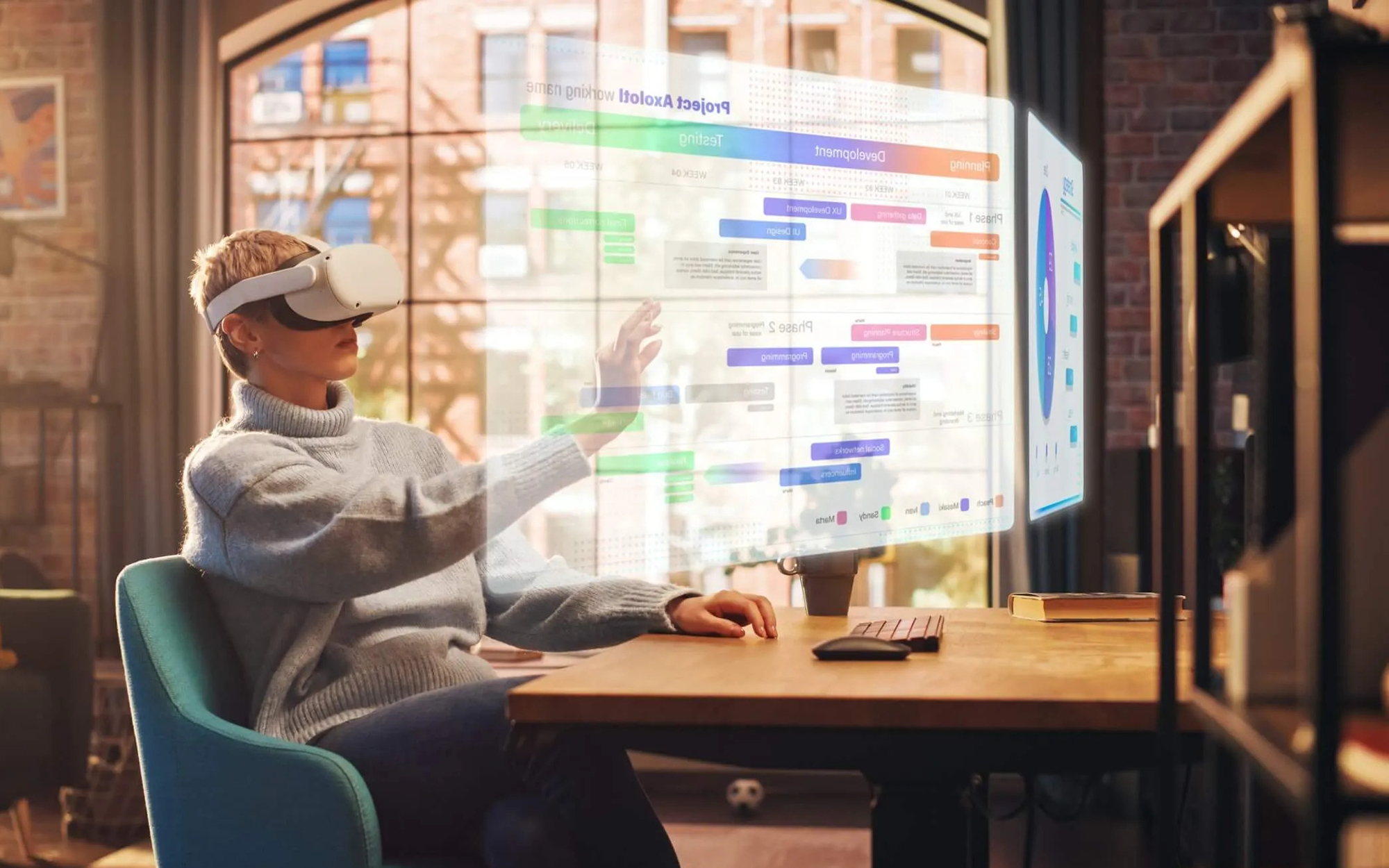
Virtual reality soft skills training offers numerous benefits. Employees experience immersive learning, which leads to better retention and application of skills. VR provides a safe environment for practice, reducing the risk of mistakes. Additionally, it allows for scalable training, ensuring consistency across the organization. Cost savings and improved training efficiency are also notable advantages.
Better Engagement and Retention
Uncovering the potential of virtual reality training solutions can significantly boost engagement and retention. Due to its immersive nature, employees find VR training more engaging than traditional methods. They interact with realistic scenarios, making the learning experience more impactful. Real-world examples highlight this advantage. For instance, a leadership team might undergo VR scenarios that test their decision-making under pressure. Such interactive experiences make the training memorable and enjoyable, leading to better skill retention.
Another critical factor is the immediate feedback provided during VR sessions. Employees receive instant responses to their actions, helping them quickly identify and correct mistakes. This continuous feedback loop enhances learning and ensures skills are effectively internalized. Additionally, VR training accommodates various learning styles. Whether employees learn best through visual, auditory, or kinesthetic methods, VR can provide a comprehensive learning experience that caters to all preferences. This adaptability makes VR training a versatile tool for improving employee engagement and retention.
Safe Environment for Practice and Feedback
A key advantage of VR soft skills training is its safe environment for practice and feedback. Employees can engage in realistic simulations without the fear of real-world consequences. For instance, VR warehouse training allows staff to handle equipment, navigate complex logistics scenarios, and practice safety protocols without risk.
This controlled setting facilitates immediate feedback. Trainers can observe employee performance and provide instant, constructive critiques. Employees can then apply this feedback in real-time, refining their skills and building confidence. The iterative nature of VR training helps employees learn from mistakes without the pressure of actual workplace repercussions.
Additionally, VR warehouse training can replicate various scenarios, from emergency response drills to routine operational tasks. This variety ensures comprehensive skill development and preparedness for diverse situations. The ability to practice repeatedly in a safe environment leads to higher proficiency and readiness. The safe, feedback-rich environment of VR training improves skills and enhances employee morale. Knowing they can practice and improve without risk boosts confidence and encourages continuous learning.
Scalable and Cost-Effective Solutions
VR soft skills training offers scalable and cost-effective solutions for organizations of all sizes. Traditional training methods involve significant logistical expenses, such as travel, accommodation, and physical materials. VR training eliminates these costs, providing a more efficient and economical approach. The scalability of VR training means that it can be rolled out to large numbers of employees simultaneously. Whether training a small team or an entire organization, VR ensures consistent content delivery and quality training. This uniformity helps maintain high standards across different locations and departments.
Furthermore, VR training reduces the need for repeated sessions. Once a VR training module is developed, it can be used indefinitely, providing long-term savings. Updates to the training content can be made easily and quickly, ensuring the material remains current and relevant. Real-world examples demonstrate the cost-effectiveness of VR training. Companies have reported significant reductions in training-related expenses while achieving better outcomes. By investing in VR training, organizations can allocate resources more efficiently, ultimately enhancing their bottom line.
Real-Time Performance Analytics
One of the standout features of VR soft skills training is real-time performance analytics. As employees engage in VR training sessions, the system collects data on their interactions, decision-making processes, and overall performance. This data provides valuable insights into employee strengths and areas for improvement.
Trainers can use these analytics to tailor feedback and adjust training programs to meet individual needs. For example, if data shows that an employee struggles with conflict resolution, additional scenarios can be introduced to focus on this skill. This personalized approach ensures that each employee receives targeted training.
Real-time performance analytics also allow for continuous improvement of the training content. Organizations can refine and enhance the VR modules by analyzing common trends and challenges faced by employees. This iterative process leads to more effective and engaging training experiences.
Moreover, these analytics can be integrated into broader employee development programs. Performance data from VR training can inform performance reviews, career development plans, and succession planning. This holistic approach ensures that VR training enhances immediate skills and contributes to long-term employee growth and organizational success.
Implementing VR Soft Skills Training in Your Organization
Implementing VR soft skills training in your organization can significantly enhance employee development. Start by assessing training needs and objectives, then choose a suitable VR training platform that aligns with these goals. Such an approach ensures a tailored, effective training program that meets your specific requirements and drives measurable improvements in employee performance.
1. Assessing Training Needs and Objectives
Assessing training needs and objectives is the first crucial step in implementing VR soft skills training. Begin by identifying the key skills that require enhancement within your organization. Conduct surveys, interviews, and performance reviews to gather data on current skill levels and gaps. Involving department heads and team leaders provides a comprehensive understanding of specific needs.
Once you have identified the skill gaps, set clear, measurable objectives for the VR training program. These objectives should align with your organization’s strategic goals and employee development plans. For example, if improving customer service is a priority, focus on enhancing communication and problem-solving skills.
Next, prioritize the skills based on their impact on overall performance and business outcomes. Establishing a clear hierarchy ensures that the most critical skills are addressed first. Additionally, consider the learning preferences and technological readiness of your employees to ensure a smooth transition to VR training.
Document your findings and objectives in a detailed training plan. This plan will serve as a roadmap for selecting the right VR training platform and developing effective training modules. Regularly review and update the plan to reflect any changes in organizational goals or skill requirements.
2. Choosing the Right VR Training Platform
Choosing the right VR training platform is essential for the success of your soft skills training program. Begin by evaluating the features and capabilities of various platforms. Look for platforms that offer realistic simulations, customizable content, and real-time feedback mechanisms. These features ensure that the training is engaging and effective.
- Consider the platform's scalability. Ensure it can accommodate the number of employees you plan to train, whether it’s a small team or the entire organization. A scalable platform allows you to expand the training program without compromising quality or consistency.
- Integration capabilities are another critical factor. The VR training platform should seamlessly integrate with your existing systems, such as Learning Management Systems (LMS) and performance analytics tools. This integration enables efficient tracking of training progress and performance metrics.
- User experience is also paramount. Choose a platform that is user-friendly and accessible to all employees, regardless of their technological proficiency. Provide adequate support and resources to help employees navigate the VR environment comfortably.
- Cost is an important consideration. Evaluate the total cost of ownership, including initial setup, licensing fees, and ongoing maintenance. Compare these costs with the potential benefits and ROI to make an informed decision.
Finally, feedback from other organizations that have implemented VR training should be sought to gain insights into the platform’s effectiveness and reliability.
3. Designing Effective Training Modules
Designing practical training modules is crucial for maximizing the impact of VR soft skills training. Begin with defining clear learning objectives for each module. Align these objectives with overall training goals and address specific skill gaps identified during the needs assessment phase.
Incorporate realistic scenarios that mirror actual workplace situations. For example, a module focused on conflict resolution might simulate difficult conversations with colleagues or clients. This practical approach ensures that employees can apply their soft skills in relevant contexts.
Engage subject matter experts to develop the content for each module. Their expertise guarantees that the training is accurate and aligned with industry best practices. Collaborate with experienced trainers to incorporate effective teaching strategies, making the modules engaging and interactive.
Integrate elements of gamification to boost engagement. Features like points, badges, and leaderboards can motivate employees to participate and improve their performance actively. Reflection and self-assessment opportunities after each module help employees consolidate their learning and identify areas for further development.
Pilot the training modules with a small group of employees before full-scale implementation. Gather feedback on content, usability, and effectiveness. Use this feedback to refine and improve the modules, ensuring they are optimized for the best possible outcomes.
4. Integrating VR Training with Existing Programs
Integrating VR training with existing programs ensures a seamless learning experience. Start by mapping out how VR training modules can complement and enhance current training initiatives. Identify areas where VR can provide added value, such as interactive simulations for complex soft skills or immersive scenarios that traditional methods cannot replicate.
Coordinate with training managers and department heads to align VR training with ongoing programs. Schedule VR modules within the training calendar at appropriate times, avoiding conflicts with other sessions. This alignment helps maintain a coherent and comprehensive training strategy.
Utilize data from existing programs to inform VR training design. Analyzing performance metrics and feedback from current initiatives highlights areas for improvement and guides VR content development. This data-driven approach ensures that VR training addresses specific needs and gaps.
Promote VR training as an integral part of the overall strategy. Communicate the benefits and unique aspects of VR training to employees, emphasizing how it complements traditional methods. Provide clear instructions and support for accessing VR modules, ensuring employees are comfortable with the new technology.
Monitor the integration process closely. Collect feedback from participants and trainers to identify any issues or areas for enhancement. Adjust the integration strategy as needed to ensure the VR training effectively supports and enhances existing programs.
Take advantage of our top-notch soft skills training solutions!
Breaking Boundaries with Virtual Reality Soft Skills Training
When compared to more conventional forms of training, virtual reality soft skills training provides fresh, engaging opportunities to learn. In order to improve their leadership, communication, and cooperation abilities, employees participate in realistic simulations. This cutting-edge method establishes a new benchmark for staff development through increased performance, engagement, and retention. Use virtual reality to improve your team's skills and training programs.
VR in Remote Team Collaboration
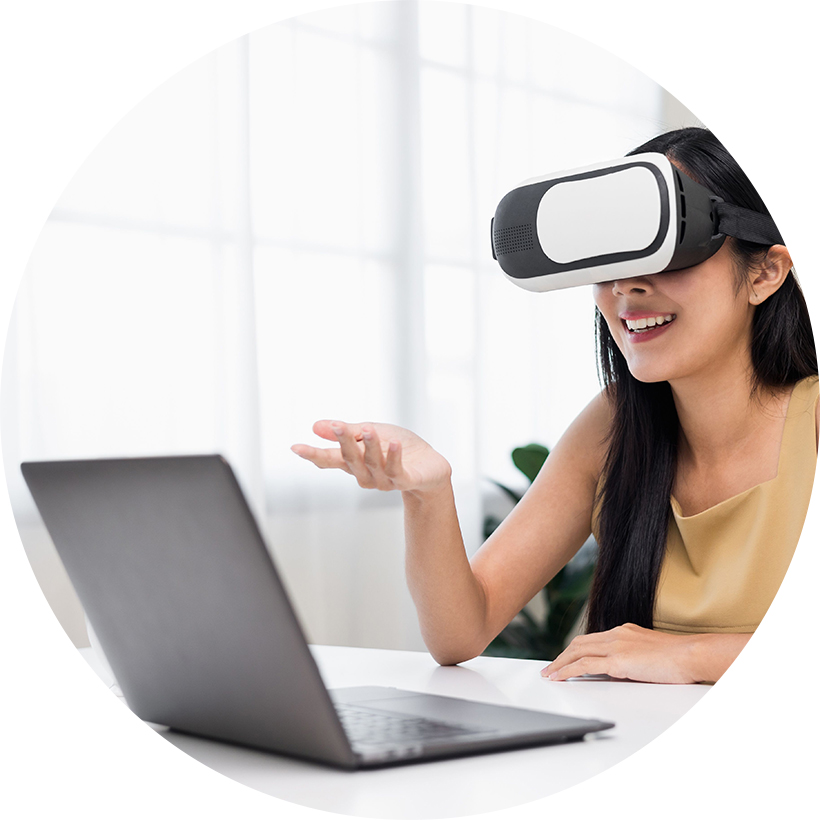
Enhancing remote team collaboration through VR offers numerous advantages. Virtual reality creates immersive environments where team members can interact as if they were in the same physical space. Meetings, brainstorming sessions, and team-building activities become more engaging and effective in a virtual setting.
For example, remote teams can use VR to simulate real-time collaboration on projects, allowing them to share ideas and solve problems together. VR platforms enable features like virtual whiteboards, 3D models, and interactive presentations, enhancing communication and creativity.
It's crucial to build a sense of presence and connection among remote team members. VR helps bridge the gap created by physical distance, fostering stronger relationships and better teamwork. Employees can participate in virtual team-building exercises, such as escape rooms or collaborative games, to strengthen bonds and improve cooperation.
Training programs for remote teams also benefit from VR. Soft skills like communication, leadership, and conflict resolution can be practiced in a controlled, immersive environment. Real-time feedback and performance analytics help employees improve their skills and apply them effectively in their remote work contexts.
Cross-Cultural Communication Skills Enhancement
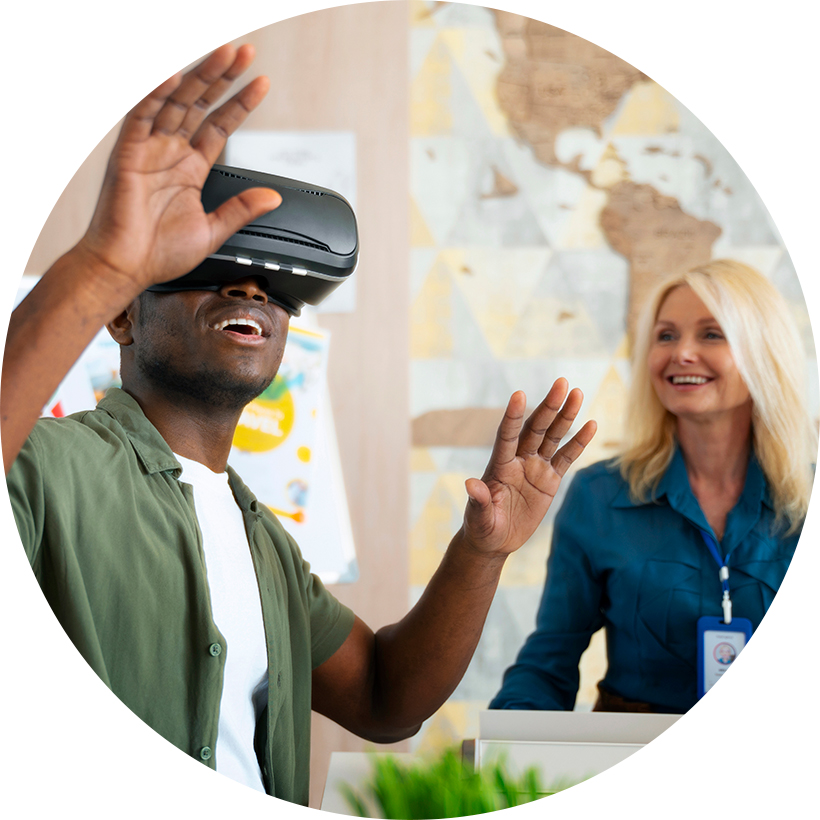
In today's increasingly international business, it is crucial to improve cross-cultural communication abilities. Virtual reality provides a fresh approach by putting workers in situations involving other cultures, allowing them to get a deeper appreciation for varied viewpoints and ways of life.
Workers may hone their communication skills by practicing with virtual avatars from different cultural backgrounds. An example of a module that might call for cultural awareness would be one in which participants negotiate with clients from various countries. Employees gain self-assurance and proficiency in interacting across cultures via this practical experience.
Training courses produced with assistance from cultural specialists guarantee accuracy and relevance. Staff members receive training on regionally unique cultural norms, proper conduct, and communication styles. This kind of focused effort can achieve a more culturally sensitive and conflict-avoidant society.
The process of learning cannot be separated from reflection and feedback. Workers may assess their progress and get helpful feedback after each VR session. Employees are able to absorb the lessons learnt and contribute to continual development through this iterative approach.
A more welcoming and cooperative workplace is a result of improved cross-cultural communication, which is good for business. People who possess these abilities are more equipped to handle the complexities of doing business on a global scale and have a positive impact on their company.
Conflict Resolution Simulations
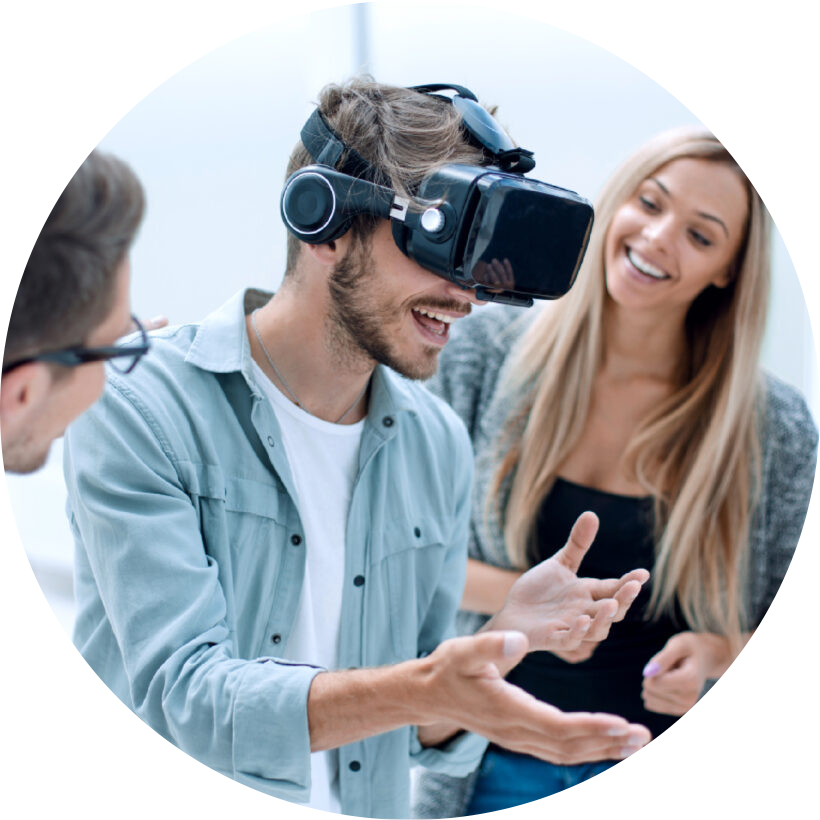
Conflict resolution is a critical skill in any workplace. VR provides an effective way to train employees in handling conflicts through immersive simulations. These simulations replicate real-life scenarios, allowing employees to practice resolving conflicts in a safe, controlled environment.
A conflict resolution module might simulate a disagreement between team members over project responsibilities. Practicing active listening, empathy, and negotiation techniques helps employees reach a resolution. Immediate feedback enables them to understand the impact of their actions and refine their approach.
Real-world examples highlight the effectiveness of VR in conflict resolution training. Employees who have undergone VR training report feeling more confident and prepared to handle conflicts. Repeatedly practicing different scenarios helps them develop a range of strategies and techniques.
Customized scenarios tailored to the organization's specific context ensure relevance and effectiveness. Addressing various conflict types, whether internal team conflicts or external client disputes, leads to better outcomes and a more harmonious work environment.
Performance analytics provide valuable insights into employee progress. Monitoring key metrics, such as resolution time and satisfaction levels, helps trainers identify areas for improvement. Continuous feedback and iterative training ensure employees consistently develop their conflict resolution skills.
The Science Behind VR and Soft Skills Training
Understanding the science behind VR and soft skills training reveals its transformative potential. Leveraging immersive technology, VR creates engaging, realistic scenarios that enhance learning outcomes. Research-backed benefits highlight how VR training improves communication, leadership, and teamwork skills.
Psychological Benefits of Immersive Learning
Immersive learning through VR offers significant psychological benefits. Engaging in VR scenarios allows employees to practice skills in a stress-free environment, reducing anxiety associated with real-world practice. This comfort level enables them to experiment and learn from mistakes without fear of negative consequences.
Moreover, VR training increases motivation and engagement. The immersive nature of VR captivates learners’ attention, making the training process enjoyable and memorable. Employees who find the training engaging are more likely to retain information and apply learned skills.
A study conducted by PwC found that VR learners were 3.75 times more emotionally connected to content than classroom learners. This emotional engagement is crucial for developing empathy and other soft skills. Employees can better understand different perspectives and improve their interpersonal interactions by practicing in a virtual setting.
Neuroscience Insights into VR Training
Neuroscience provides valuable insights into the effectiveness of VR training. The brain's mirror neuron system activates when individuals observe or perform an action, enhancing learning and skill acquisition. VR exploits this system by allowing users to immerse themselves in realistic scenarios, promoting better retention and application of skills.
Research shows that immersive VR experiences stimulate multiple brain areas simultaneously. This stimulation leads to more robust neural connections, facilitating deeper learning. Employees practicing soft skills in VR can internalize and recall these skills more effectively than traditional methods.
Furthermore, VR training leverages the brain's plasticity. The repetitive practice of scenarios in a virtual environment helps reinforce new neural pathways. This reinforcement accelerates the learning process and allows employees to build lasting competencies.
For example, doctors using VR simulations for surgical training have shown improved precision and confidence. Similar benefits apply to soft skills training, where employees can practice complex interactions repeatedly, refining their abilities and boosting their confidence in real-life situations.
The Impact of VR on Learning Retention
The impact of VR on learning retention is profound. Studies have shown that VR training significantly enhances memory retention compared to traditional methods. The immersive nature of VR creates a strong sense of presence, making the learning experience more vivid and memorable.
One study by the University of Maryland found that participants using VR for learning had an 8.8% higher recall accuracy compared to those using traditional methods. Such an increased retention can be attributed to the multisensory engagement provided by VR, which stimulates different parts of the brain.
Real-world applications demonstrate the effectiveness of VR in improving retention. For instance, Walmart has implemented VR training for its employees, resulting in higher retention rates and improved performance. Employees trained using VR are better prepared to handle real-world scenarios, having experienced similar situations in a virtual environment.
Moreover, VR training allows for repeated practice, which is essential for reinforcing learning. Employees can revisit scenarios multiple times, reinforcing their knowledge and skills. This repetitive practice ensures that the information is retained longer and can be applied effectively in the workplace.
VR Soft Skills Training with Program-Ace’s Professionals
Program-Ace offers comprehensive VR soft skills training tailored to meet your organization's unique needs. As a professional software development service provider, we leverage cutting-edge VR technology to create immersive and compelling training modules. Our expert team designs realistic scenarios that enhance communication, leadership, and teamwork skills, ensuring your employees are well-equipped for real-world challenges.
Partnering with Program-Ace means benefiting from our extensive experience and commitment to quality. We collaborate closely with your team to understand your training goals and customize the VR experience accordingly. This personalized approach guarantees relevant and impactful training outcomes.
Ready to change your training programs with our innovative VR solutions? Contact us today to learn more about how we can help you elevate your team's soft skills. Reaching out to us will provide you with detailed information and a tailored plan to meet your organizational needs.
